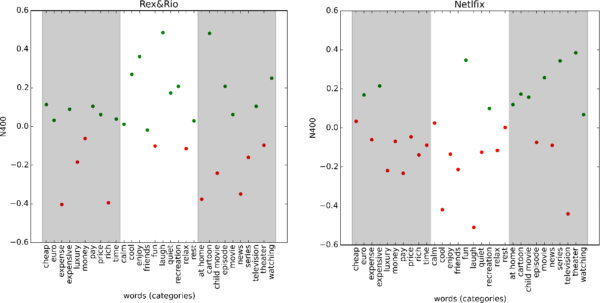Companies need to ensure that customers perceive their brands as intended, with strong and unique associations, when facing a competitive market. Traditionally, brand associations are measured using conventional techniques such as surveys and questionnaires albeit both conscious and unconscious factors can influence the collected data and the outcome of a campaign.
Decoding Brand Associations
Neuromarketing can shed light on how the customer’s brain processes marketing stimuli. In a scientific study co-authored by Mindspeller‘s founder, Prof. Marc Van Hulle, on an EEG study aimed at gauging mental associations with brands, we focus on the N400 event-related potential, an EEG component most strongly elicited in response to a concept unrelated to a preceding concept. The N400 EEG paradigm was used extensively to validate Mindspeller’s neurometric brand tracker.
We considered two video on demand brands, Netflix and Rex&Rio (later replaced by the brand “Streamz”, owned by Telenet), and selected a set of words grouped in 4 categories that were either related (Television, Relaxation, and Price), in varying degrees, or unrelated (Unrelated) to the said brands. The experiment started with both brands’ TV commercials, as a common reference for our participants.

We then applied a semantic priming paradigm in which a brand logo (“prime”) was followed by a word (“target”), and the strength of the N400 response to the word used as an inverted measure of the association strength with the brand logo.
We clustered N400 responses to identify, for each brand, natural groups of associated words. As a result, for Netflix the cluster with the smallest N400 responses (i.e., strongest associations) consisted of words related to Television but for Rex&Rio it consisted of words related to Relaxation.
We also evaluated the relationship between the two brands and determined which associations they share or which ones they do not. It turned out that associations related to Relaxation and Television distinguish the two brands the most.

Interestingly, traditional survey data did not show any difference between the two brands as they were equally associated with Television and Relaxation. These findings show that our N400 technique and related semantic mapping protocol can reveal brand associations, and natural categories thereof, that would otherwise go unnoticed when using conventional survey methods.
Access the complete research paper here.



